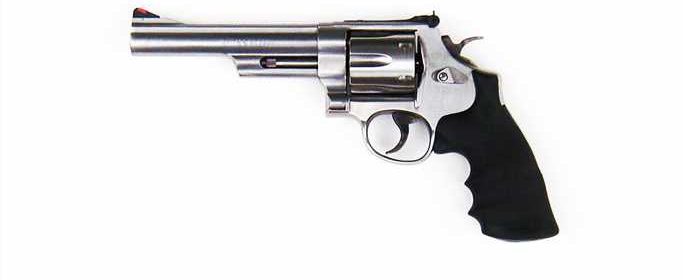Smith & Wesson Posts Record Income, but Gun Sales Down 20% in February

When gunmaker Smith & Wesson Brands Inc. (NASDAQ: SWBI) reported fiscal third-quarter results after markets closed Thursday, the company posted record net income of more than $62 million for the quarter that ended on January 31. That was a 27% boost to the previous record set in the quarter that ended just three months earlier.
There’s no question that the COVID-19 pandemic led to a banner year for gun sales. According to FBI records, more than 39 million firearm checks were conducted last year, a 40% jump compared to 2019. The FBI National Instant Criminal Background Check System (NICS) is the accepted proxy for U.S. gun sales.
For the first two months of the year, the increase in NICS checks was also 50% higher than a year ago. Smith & Wesson said it manufactured and shipped more than 623,000 handguns and long guns in the third quarter, an increase of 250,000 (67%) compared to the same period a year ago.
On a conference call with analysts following the earnings report, Smith & Wesson CEO Mark Smith referred to the “millions of new consumers from all walks of life, who purchased their first firearm in the past year” and noted that gun industry trade group NSSF data showed that “an estimated 8.4 million Americans purchased their first firearm in the year, and the industry is not only growing, but also diversifying, with women and minorities making up more than 40% of the overall purchases.”
If 8.4 million bought their first firearm last year, that means that the other 30.6 million sales were made to people who already owned a gun. While a 21.5% increase in sales is a big deal, how long can that growth continue? On average, a U.S. gun owner today owns five guns.
Smith acknowledged the issue:
January of 2021 was the fifth largest NICS month ever on record. And the February results that were just released on Tuesday indicate that although the firearm sales decelerated sequentially, we believe, due to a number of factors from severe weather disruptions to delayed stimulus and tax returns, interest in the shooting sports remains very strong.
However, Smith does expect the year-over-year comparisons of NICS checks to “become more difficult” as the effects of the pandemic-induced buying spree ends.
Despite gun industry publications touting growth in hunting and sport shooting sales, in a 2017 Pew Research survey of gun owners, two-thirds say they own a gun for protection, compared with 38% who say hunting is their primary reason for owning a firearm and 30% who say sport shooting is their primary reason for gun ownership.
Shares of Smith & Wesson traded up nearly 6% early in Friday’s premarket session. At last look, the shares were down 0.9% at $15.65, in a 52-week range of $4.24 to $23.57. The consensus price target on the stock is $22.40, and the company pays a dividend yield of 1.23%.
Source: Read Full Article
